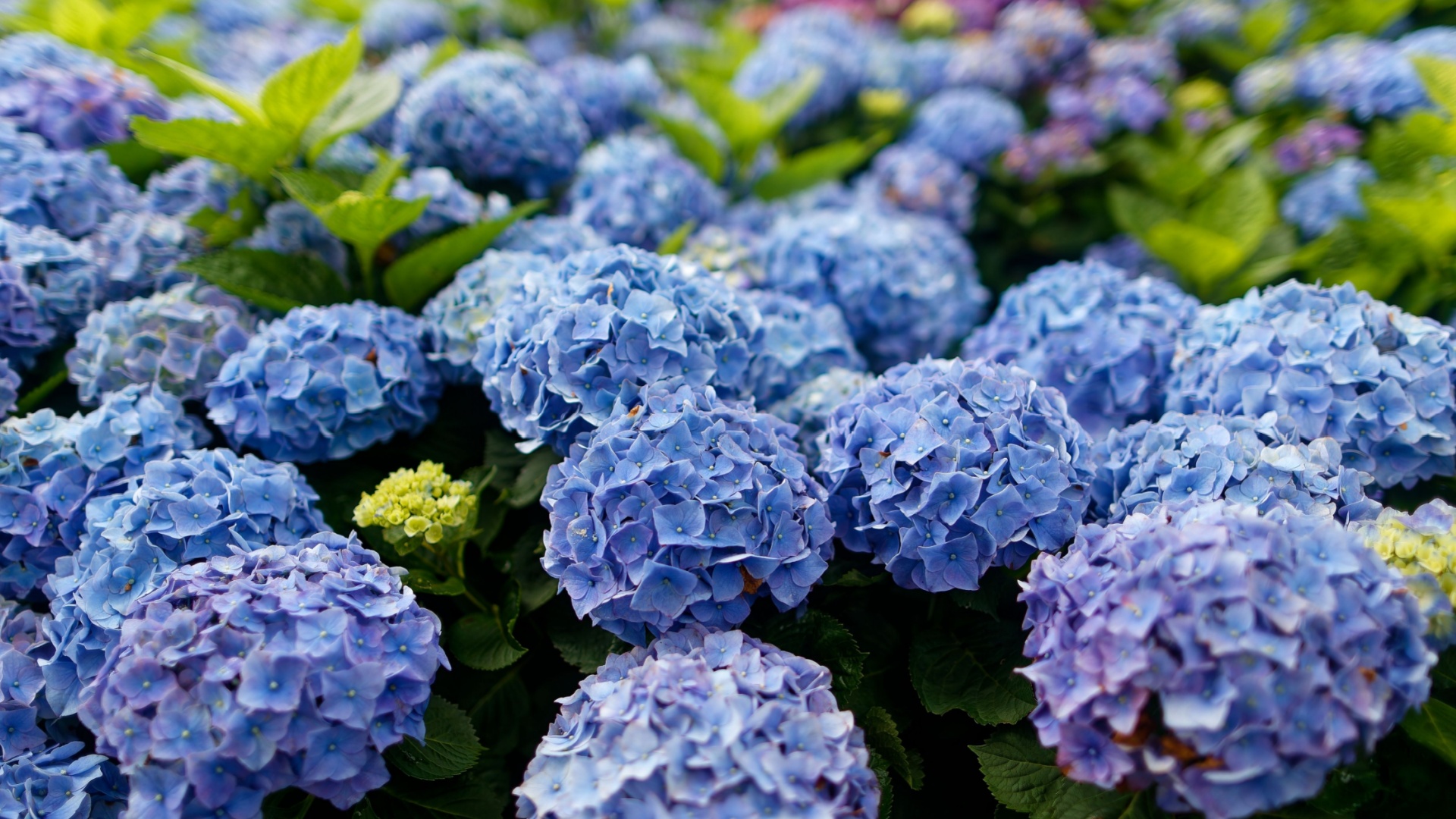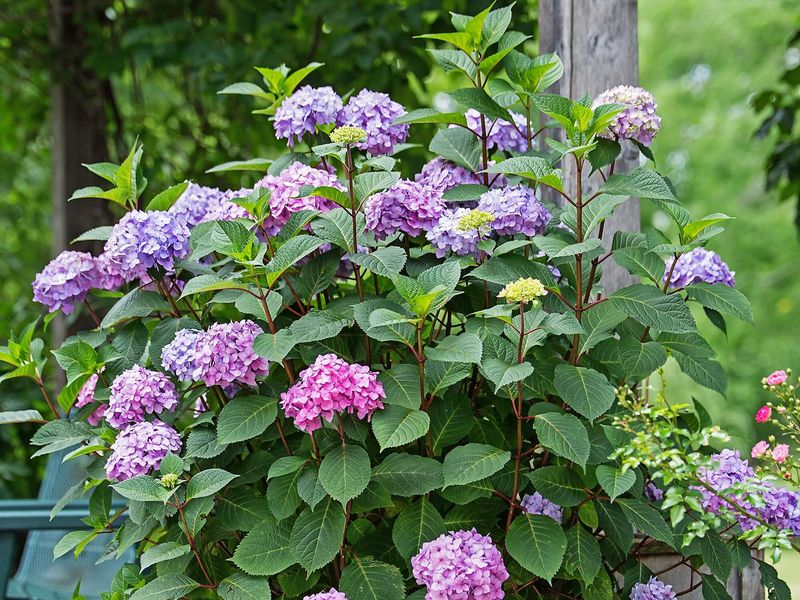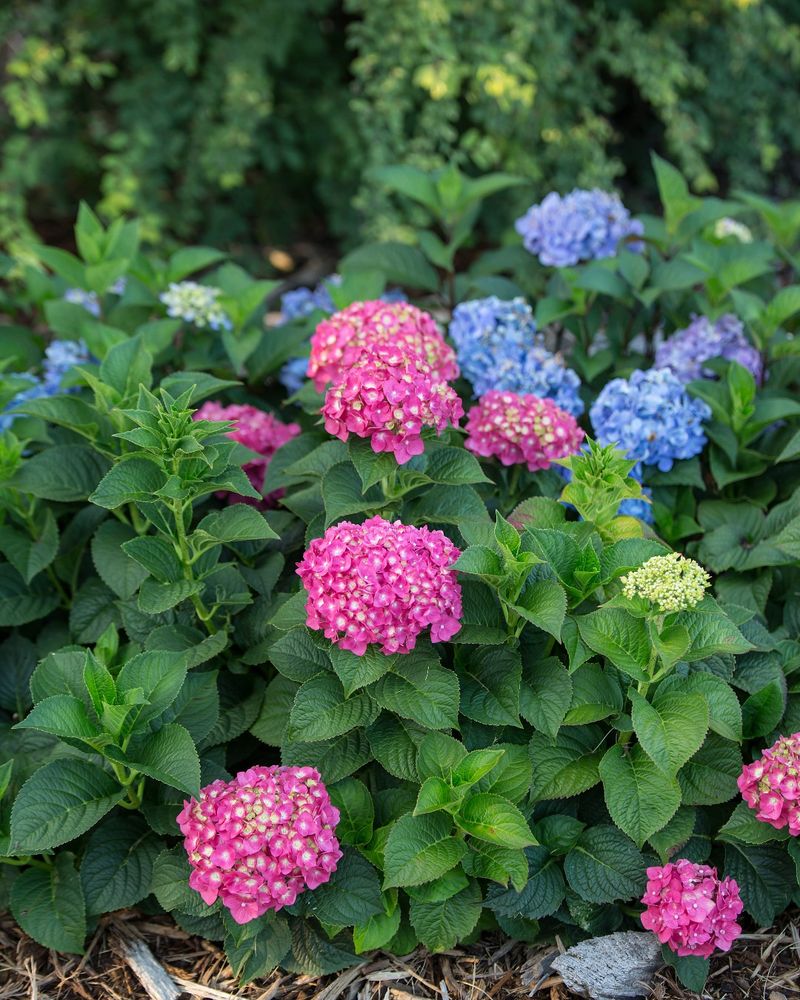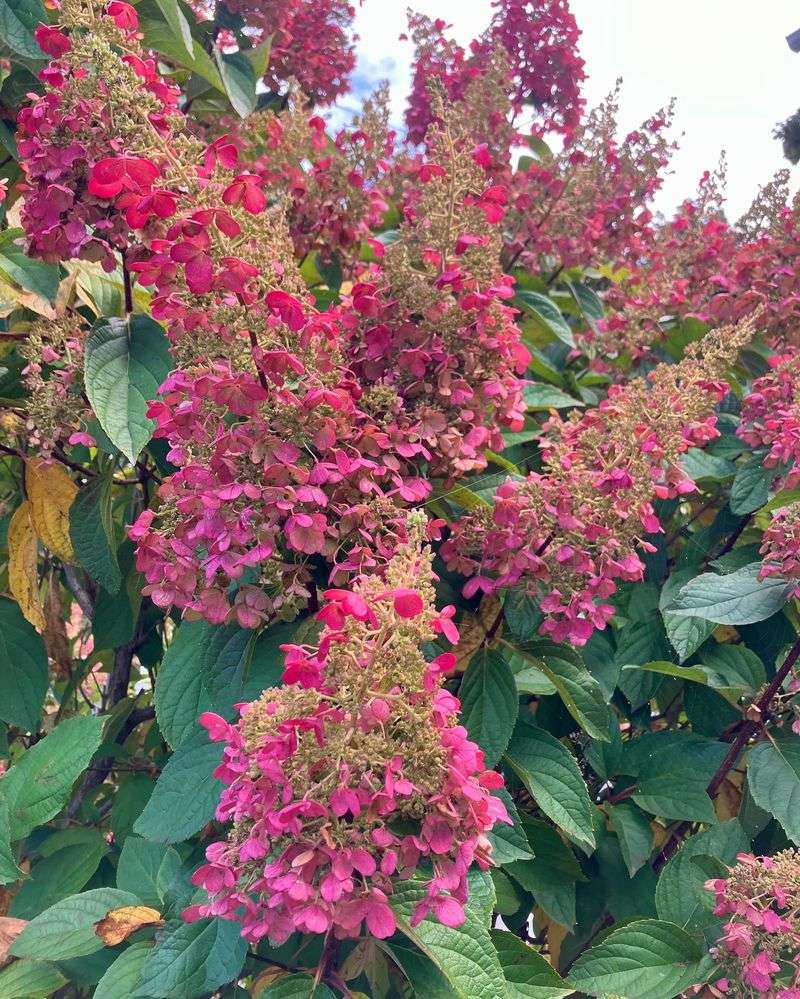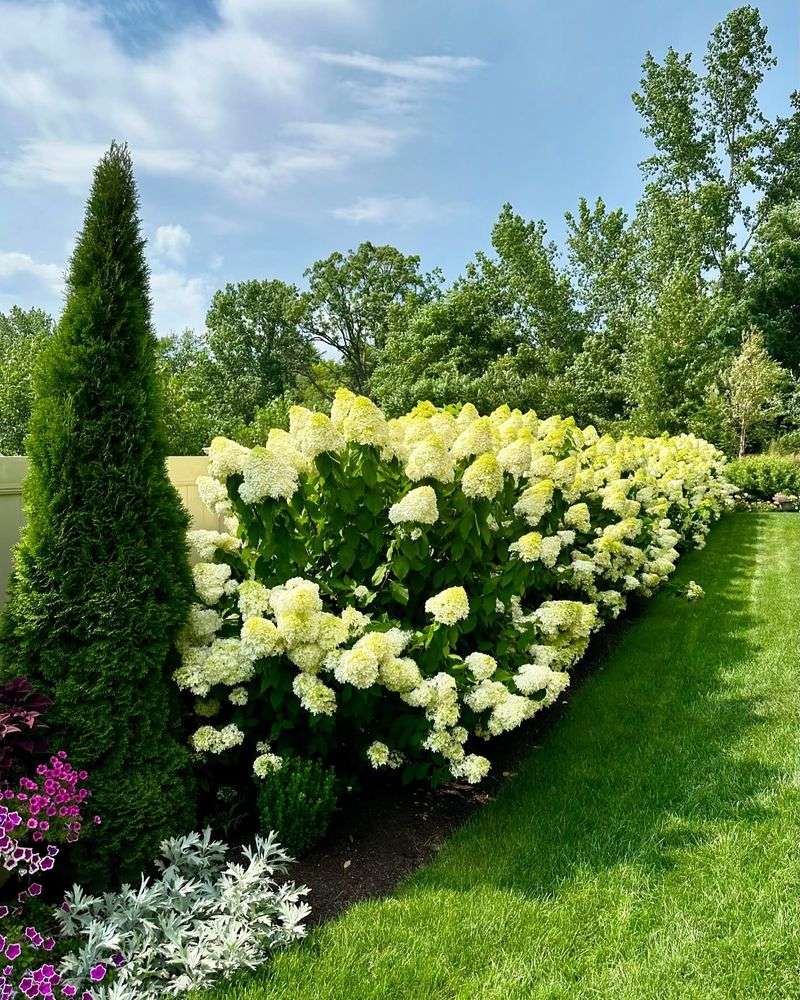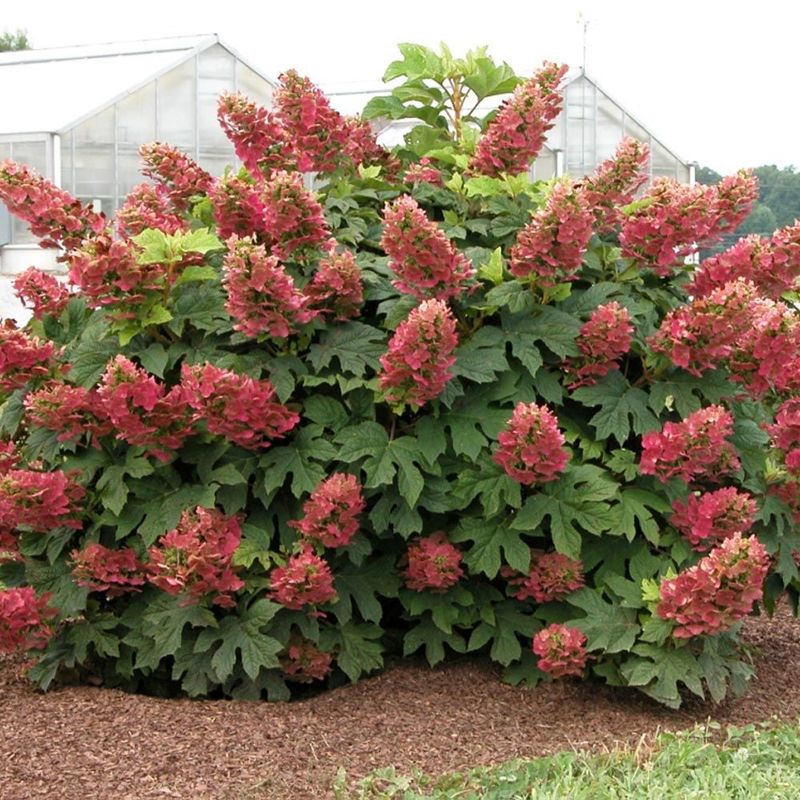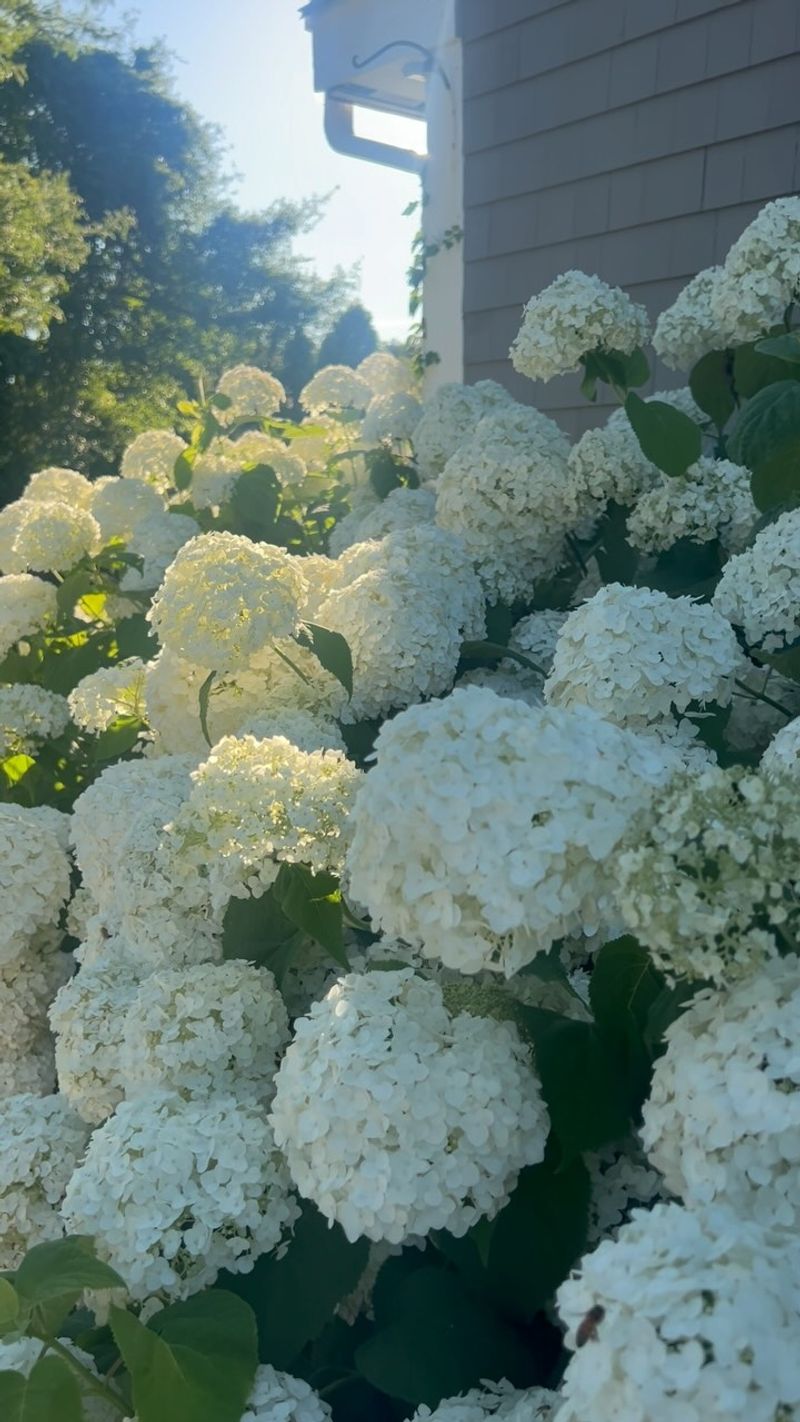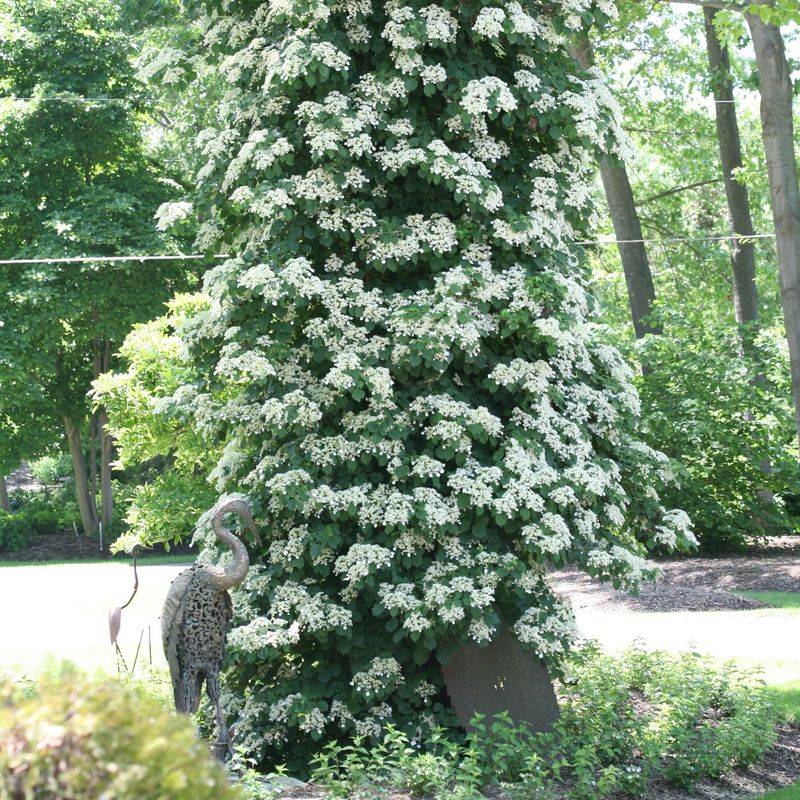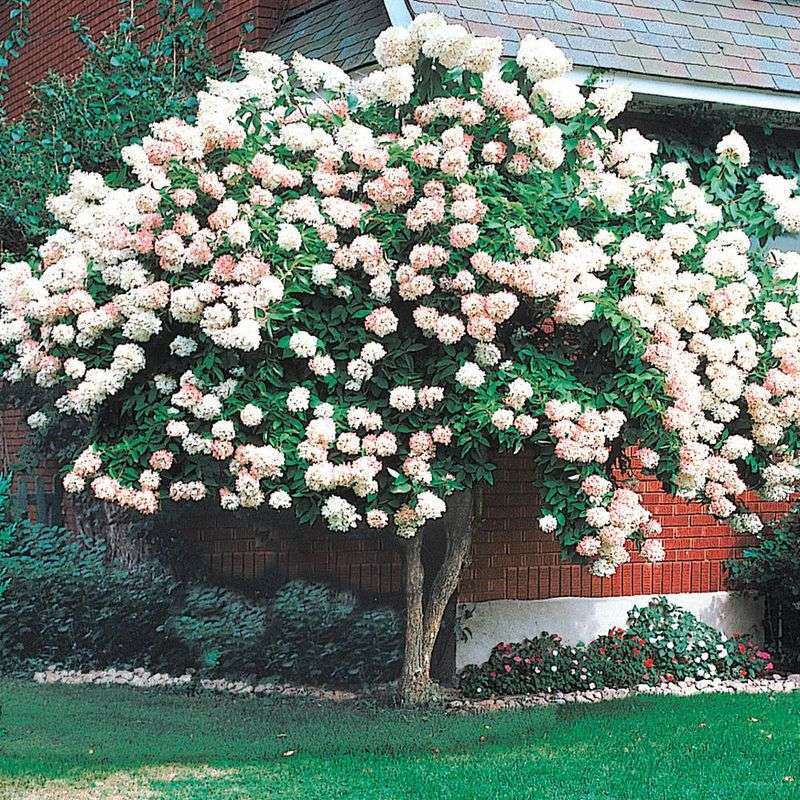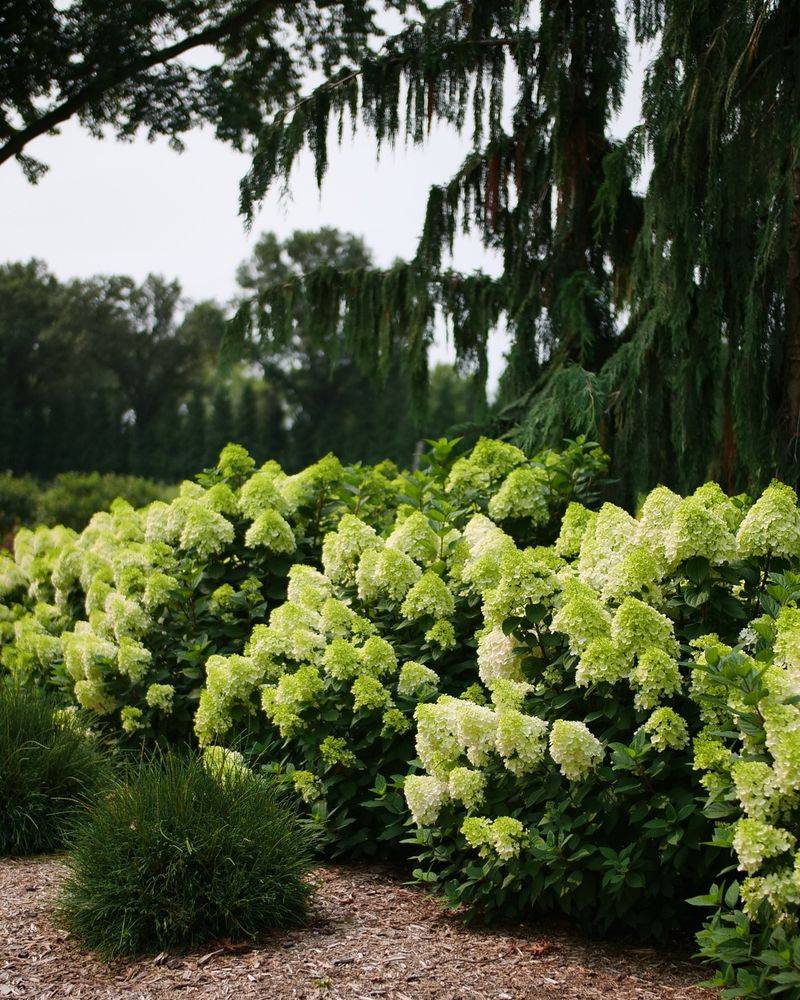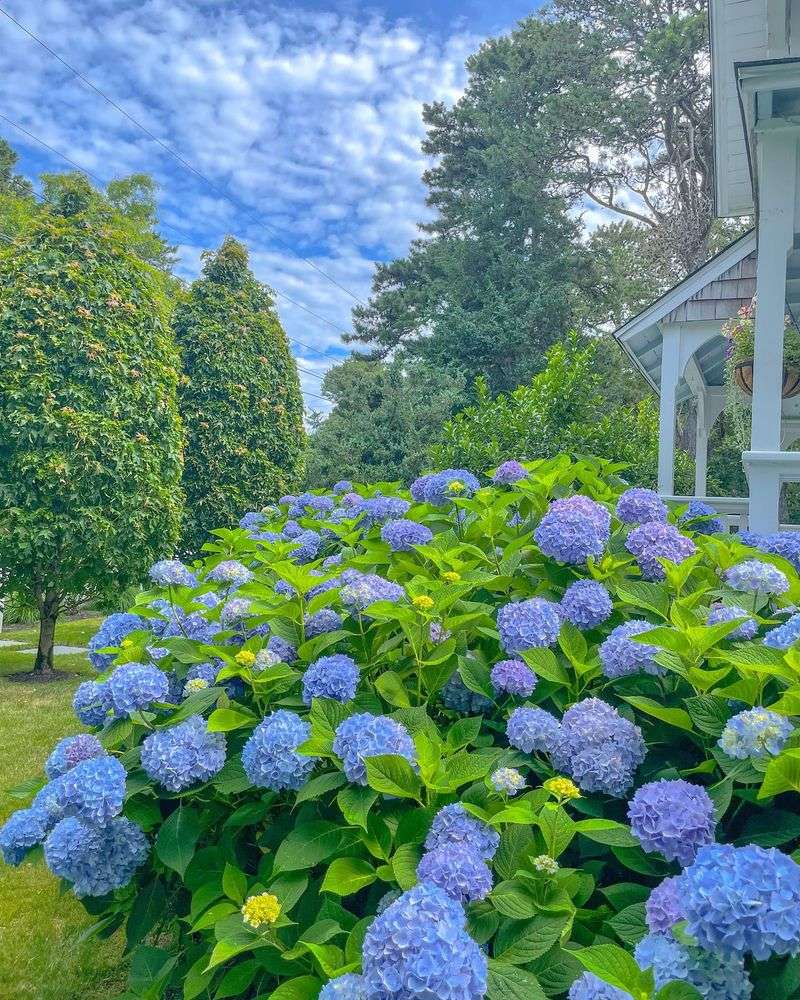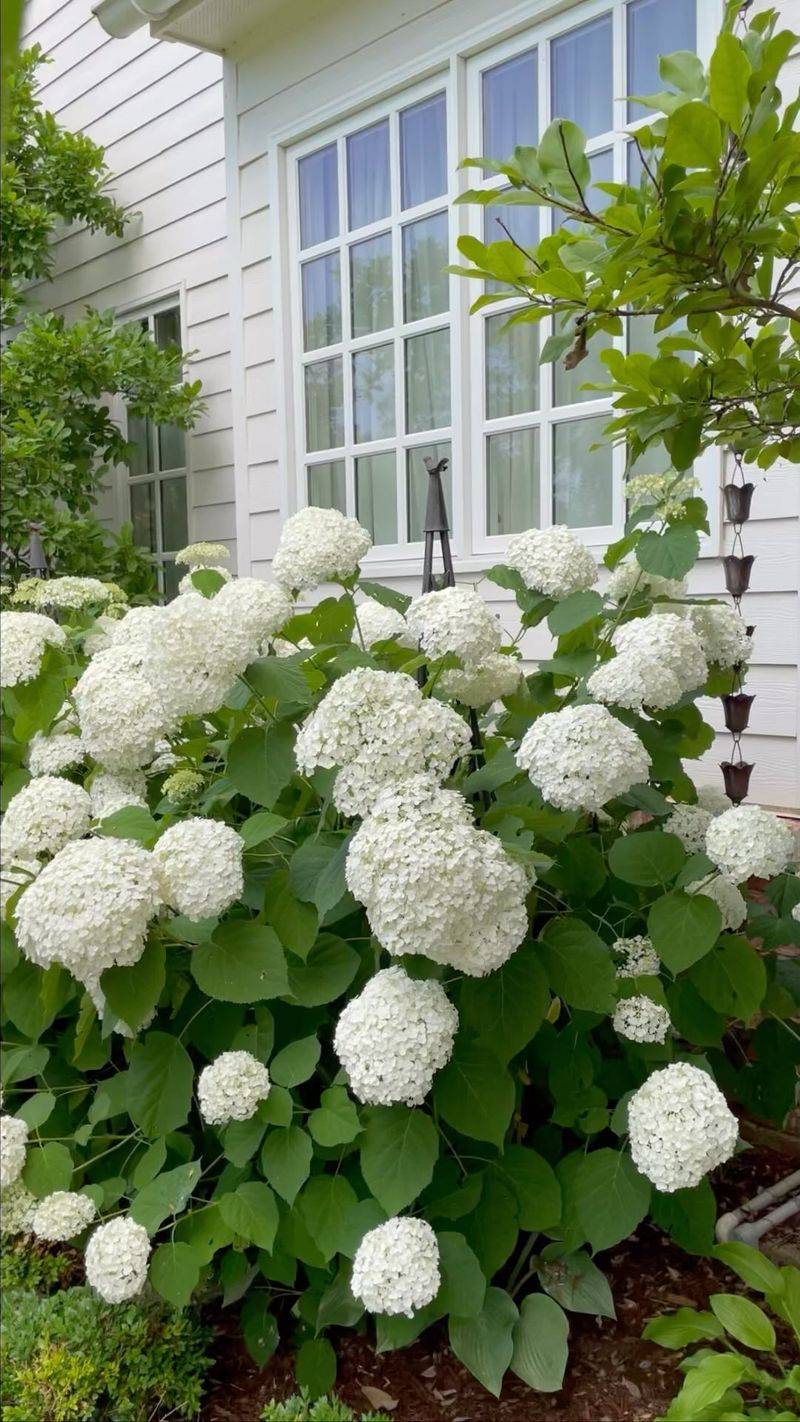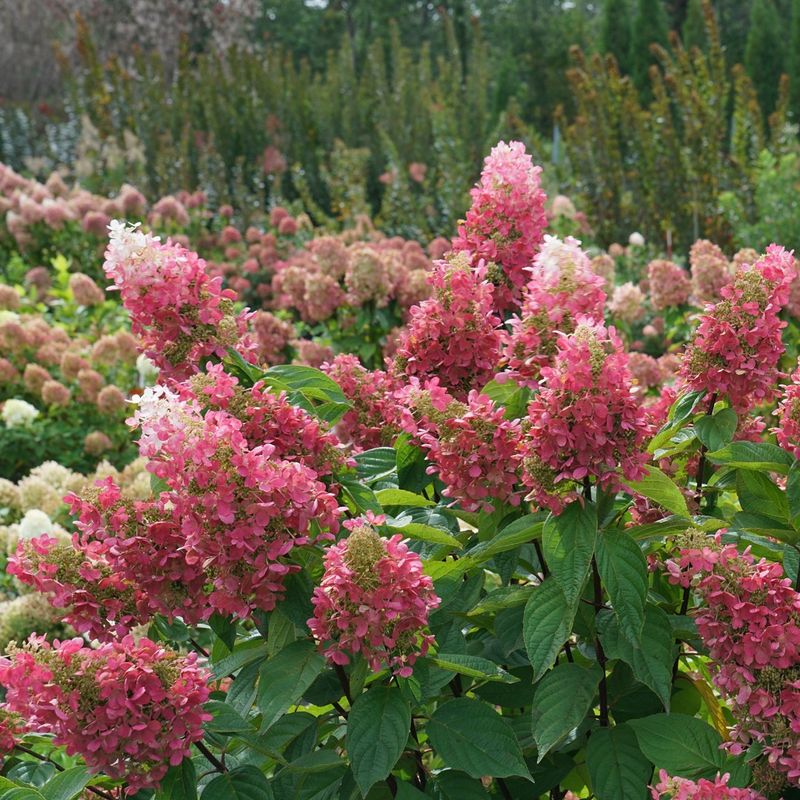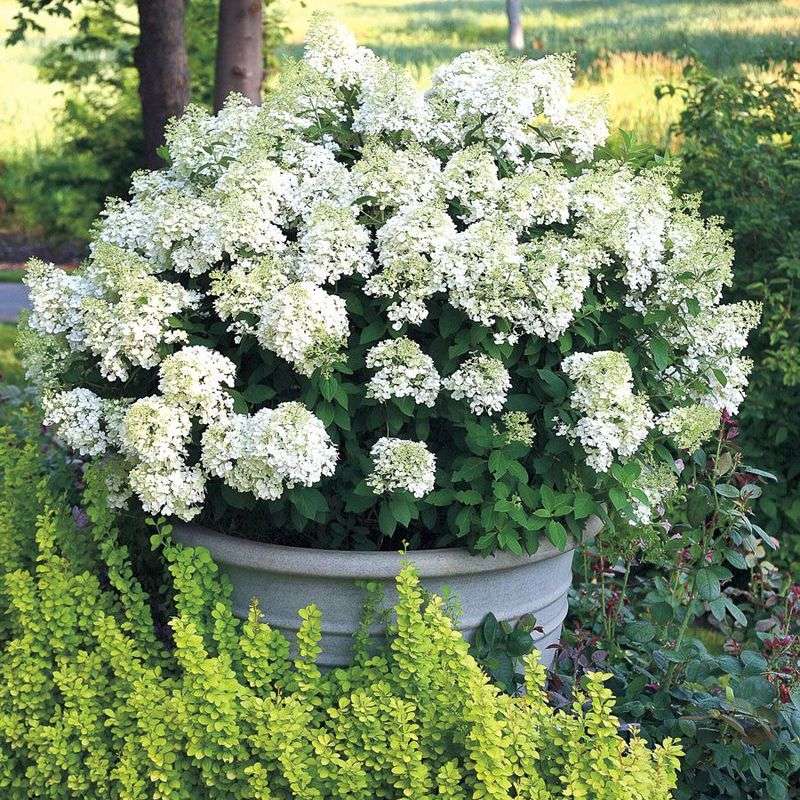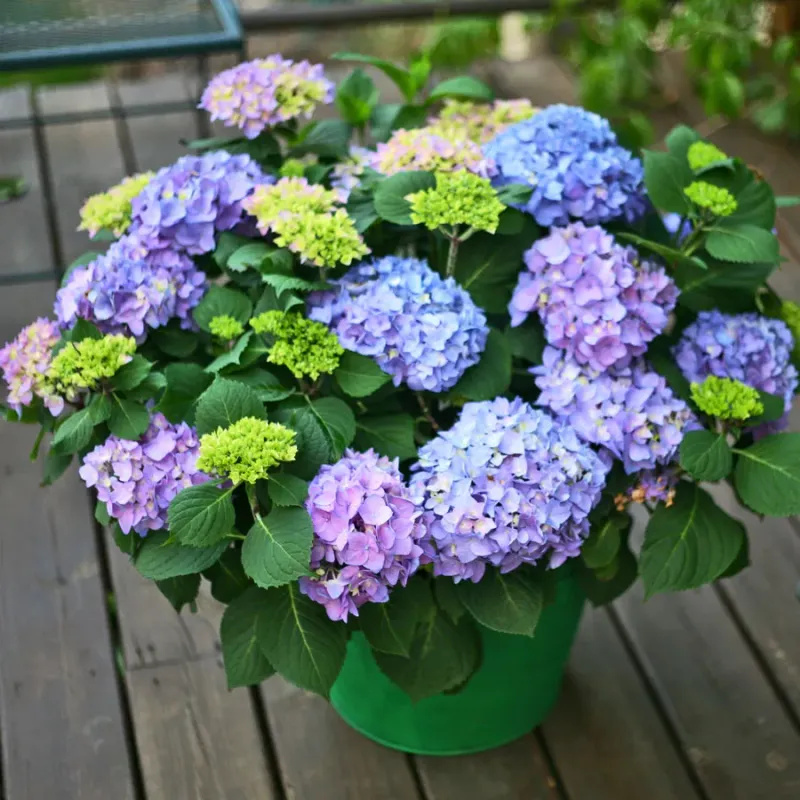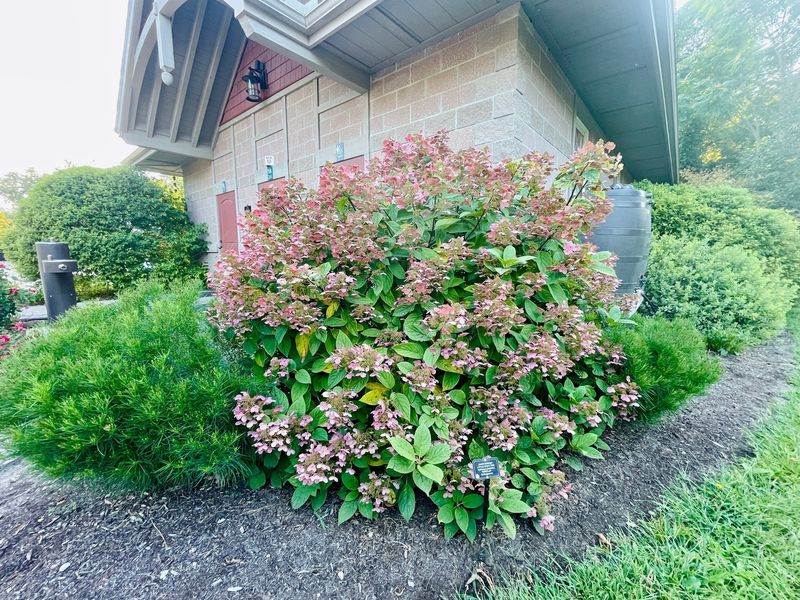Not all hydrangeas are dainty shrubs. Some stay compact and tidy—others grow into bold, sprawling garden giants. If you’re planning to add one of these beloved bloomers to your yard, knowing how tall and wide each type gets can save you from a planting mistake you’ll regret later.
Here’s how big the 15 most popular hydrangeas really grow, so you can plan smart and let your garden thrive.
1. Bigleaf Hydrangea (Hydrangea macrophylla)
Beloved for their color-changing blooms, bigleaf hydrangeas typically reach 3-6 feet tall and spread 3-6 feet wide. The classic mophead varieties tend to stay more compact than their lacecap cousins.
In warmer climates, these beauties may grow larger than in cooler regions. Give them plenty of room to expand over time, as crowding can reduce flowering and increase disease problems.
Smaller cultivars like ‘Cityline Paris’ stay more manageable at just 1-3 feet tall and wide, perfect for containers or tight spaces.
2. Endless Summer Hydrangea
Unlike traditional bigleafs, the revolutionary Endless Summer series blooms on both old and new wood, extending the flowering season dramatically. Most varieties in this series maintain a manageable size of 3-5 feet tall and 3-5 feet wide.
Perfect for foundation plantings or as specimen plants, they create stunning focal points without overwhelming smaller landscapes. The original ‘Endless Summer’ stays slightly more compact than newer introductions like ‘Summer Crush’.
Plant them with their mature size in mind, allowing at least 4 feet between plants for good air circulation.
3. Panicle Hydrangea (Hydrangea paniculata)
Among the largest hydrangeas, standard panicle varieties can reach impressive heights of 8-15 feet tall with a spread of 6-12 feet wide. Their cone-shaped flower clusters transform from white to pink or red as summer progresses.
Dwarf cultivars offer more manageable options – ‘Little Lime’ grows to just 3-5 feet tall and wide, while ‘Bobo’ stays even smaller at 2-3 feet. These sturdy plants tolerate more sun than other hydrangeas.
Unlike their cousins, panicle hydrangeas can be trained into small trees with a single trunk, creating dramatic landscape statements.
4. Limelight Hydrangea
The wildly popular ‘Limelight’ panicle hydrangea commands attention with its chartreuse-green summer blooms that age to pink and burgundy. Standard ‘Limelight’ plants grow 6-8 feet tall and 6-8 feet wide when mature.
For smaller spaces, ‘Little Lime’ offers the same stunning flowers on a more compact 3-5 foot frame. Both varieties need room to breathe, so avoid crowding them against structures or other plants.
Unlike fussier hydrangeas, ‘Limelight’ handles full sun beautifully in northern regions and grows quickly, often reaching full size within 4-5 years.
5. Oakleaf Hydrangea (Hydrangea quercifolia)
Named for their distinctive oak-shaped leaves, these native American beauties grow 6-8 feet tall and 6-8 feet wide. Their large, cone-shaped white flower clusters transform to pink and burgundy as summer fades into fall.
Smaller cultivars like ‘Ruby Slippers’ and ‘Pee Wee’ stay more manageable at 3-4 feet tall and wide. Fall brings another spectacular show as the leaves turn brilliant shades of burgundy, orange, and purple.
Unlike other hydrangeas, oakleaf varieties offer four-season interest with their cinnamon-colored exfoliating bark adding winter appeal after leaves drop.
6. Annabelle Hydrangea (Hydrangea arborescens ‘Annabelle’)
Famous for producing enormous white snowball blooms, ‘Annabelle’ grows 3-5 feet tall and 4-6 feet wide. The classic variety has flowers so large they often bend stems to the ground after summer rains.
Newer introductions like ‘Incrediball’ maintain the impressive flower size with stronger stems that resist flopping. These native North American hydrangeas bloom reliably even after harsh winters since they flower on new wood.
Plant ‘Annabelle’ where its width can be accommodated – it spreads through underground stems and may need occasional pruning to maintain boundaries in smaller gardens.
7. Climbing Hydrangea (Hydrangea petiolaris)
Unlike shrub forms, climbing hydrangea clings to surfaces with aerial rootlets and can reach astonishing heights of 30-50 feet with a spread of 5-6 feet. Patient gardeners will be rewarded – these vines take 3-5 years to establish before beginning their upward journey.
White lacecap flowers appear in early summer against heart-shaped leaves. In winter, the exfoliating cinnamon bark adds texture and interest to the landscape.
When mature, a single climbing hydrangea can cover an entire wall or large tree trunk, creating a spectacular flowering display that requires sturdy support to handle its considerable weight.
8. PeeGee Hydrangea (Hydrangea paniculata ‘Grandiflora’)
The classic PeeGee hydrangea grows into a substantial presence, reaching 10-15 feet tall and 10-12 feet wide. Often trained as a small tree, it produces massive cone-shaped white flower clusters that gradually turn pink as summer progresses.
Dating back to the Victorian era, these long-lived plants can survive for decades in the landscape. Their strong branches handle the weight of heavy flower clusters better than many other varieties.
Allow plenty of space for these giants – they make excellent specimen plants in the middle of lawns where their full glory can be appreciated from all angles.
9. Little Lime Hydrangea
A compact powerhouse, ‘Little Lime’ delivers the same stunning lime-green to pink flowers as its larger cousin ‘Limelight’ but on a much smaller frame. This dwarf panicle hydrangea reaches just 3-5 feet tall and 3-5 feet wide at maturity.
Perfect for smaller gardens, containers, or mixed borders, ‘Little Lime’ won’t overwhelm neighboring plants. The sturdy stems hold flowers upright without flopping, even after summer rainstorms.
Plant them about 4 feet apart when creating a hedge, as they’ll fill in nicely without becoming overcrowded. Full sun produces the strongest stems and most abundant flowers.
10. Nikko Blue Hydrangea
The iconic ‘Nikko Blue’ produces intensely blue mophead flowers (in acidic soil) on a moderately-sized shrub reaching 4-6 feet tall and 4-6 feet wide. This classic bigleaf hydrangea has been a garden favorite for generations.
Morning sun with afternoon shade provides ideal growing conditions, preventing the wilting that can occur in hot locations. In colder climates, ‘Nikko Blue’ may stay smaller and flower less reliably due to winter bud damage.
Plant this beauty where you can admire its electric blue blooms up close – they make spectacular cut flowers that dry beautifully for arrangements.
11. Incrediball Hydrangea
An improved ‘Annabelle’ with massive white flower heads and stronger stems, ‘Incrediball’ grows 4-5 feet tall and 4-5 feet wide. The basketball-sized blooms emerge lime-green, mature to pure white, then age to light green again as summer progresses.
Unlike older varieties, these sturdy plants stand upright even after heavy rains. The flowers appear on new wood, so even harsh winters won’t prevent a spectacular summer show.
Give ‘Incrediball’ room to reach its full width – these plants make a dramatic statement when planted in groups of three or five with adequate spacing between them.
12. Pinky Winky Hydrangea
‘Pinky Winky’ stands out with its two-toned flower panicles – white blooms emerge at the top while the bottom flowers turn bright pink. This distinctive panicle hydrangea grows 6-8 feet tall and 6-8 feet wide at maturity.
Strong stems prevent flopping, making this variety particularly low-maintenance. Unlike bigleaf hydrangeas, ‘Pinky Winky’ blooms reliably even after cold winters since it flowers on new growth.
The dramatic color contrast continues from midsummer through fall, with flowers remaining attractive even as they dry on the plant. Allow plenty of space for this vigorous grower to reach its impressive full size.
13. Bobo Hydrangea
One of the smallest panicle hydrangeas available, ‘Bobo’ packs a powerful punch in a petite package – just 2-3 feet tall and 3-4 feet wide. Despite its diminutive size, this mighty mini produces an astonishing quantity of white flowers that cover the plant completely.
Perfect for containers, small gardens, or front-of-border plantings, ‘Bobo’ won’t outgrow its welcome. The flowers age to pink in fall, extending the season of interest well into autumn.
Plant them about 3 feet apart when creating a low hedge, as they’ll fill in nicely without becoming too crowded.
14. Let’s Dance Rhythmic Blue Hydrangea
Part of the reblooming ‘Let’s Dance’ series, ‘Rhythmic Blue’ offers spectacular blue or pink mophead flowers (depending on soil pH) on a compact frame. This manageable bigleaf hydrangea grows 2-3 feet tall and 2-3 feet wide.
Unlike traditional bigleafs, ‘Rhythmic Blue’ flowers on both old and new wood, ensuring blooms even after harsh winters. The compact size makes it perfect for containers, small gardens, or foundation plantings.
Morning sun with afternoon shade provides ideal growing conditions for these beauties, which produce waves of flowers from early summer through fall.
15. Quick Fire Hydrangea
Early-blooming ‘Quick Fire’ beats other panicle hydrangeas to the punch, flowering weeks earlier and growing 6-8 feet tall and 6-8 feet wide. The white flower panicles rapidly transform to deep pink-red, creating a dramatic show that lasts for months.
For smaller spaces, ‘Little Quick Fire’ offers the same early blooms on a more compact 3-5 foot frame. Both varieties tolerate more sun than bigleaf types and can handle a variety of soil conditions.
Plant ‘Quick Fire’ where you can appreciate its season-long color transformation – from white to pink to deep rose-red as summer progresses into fall.

